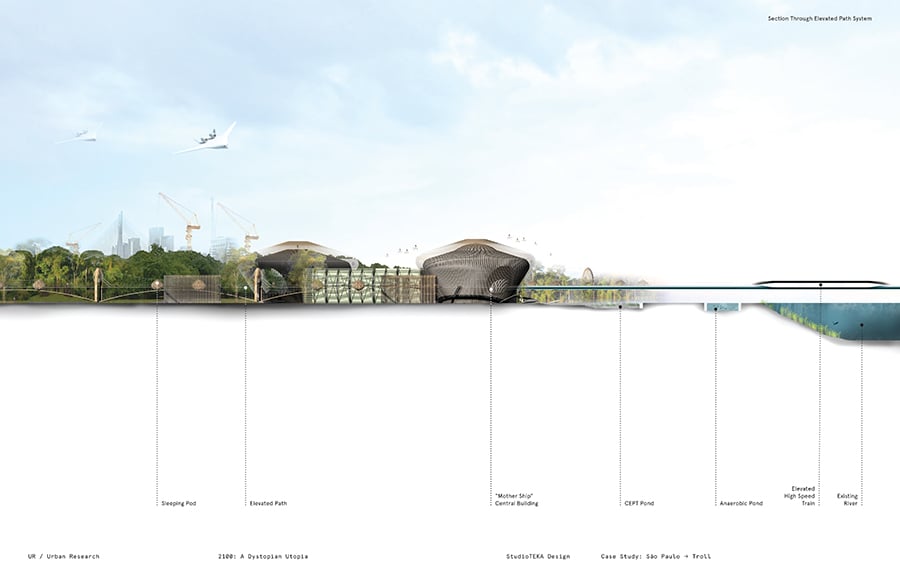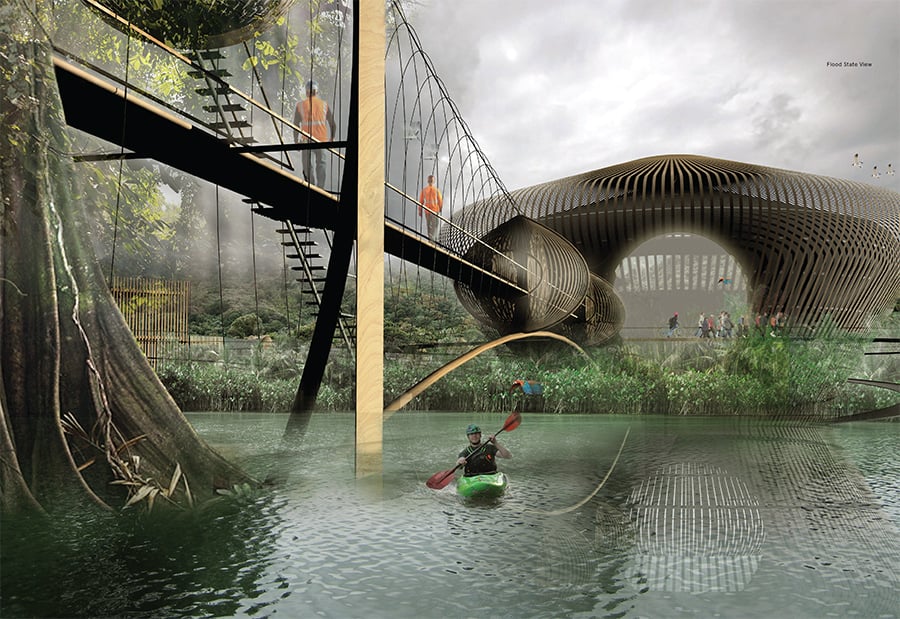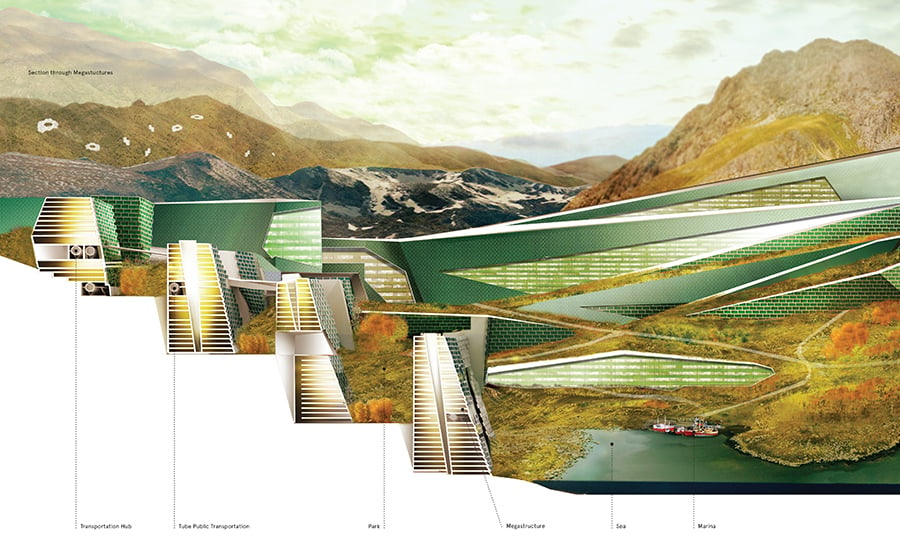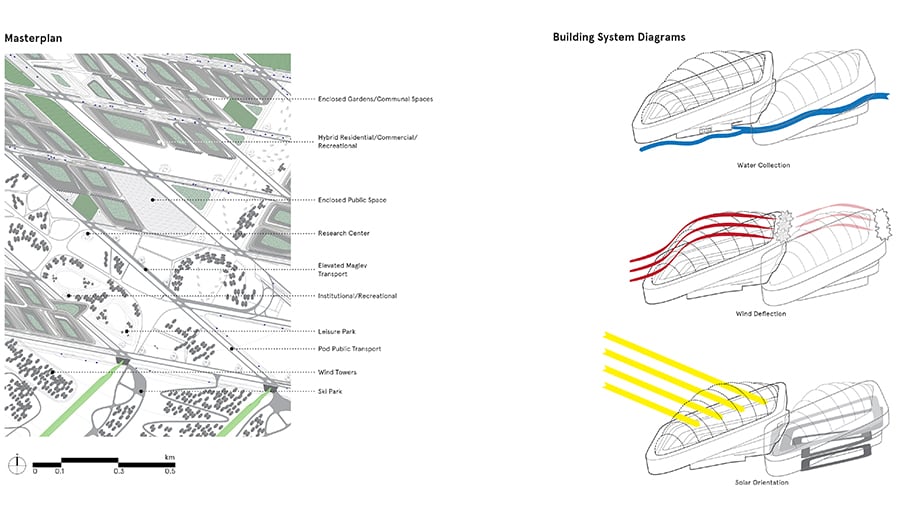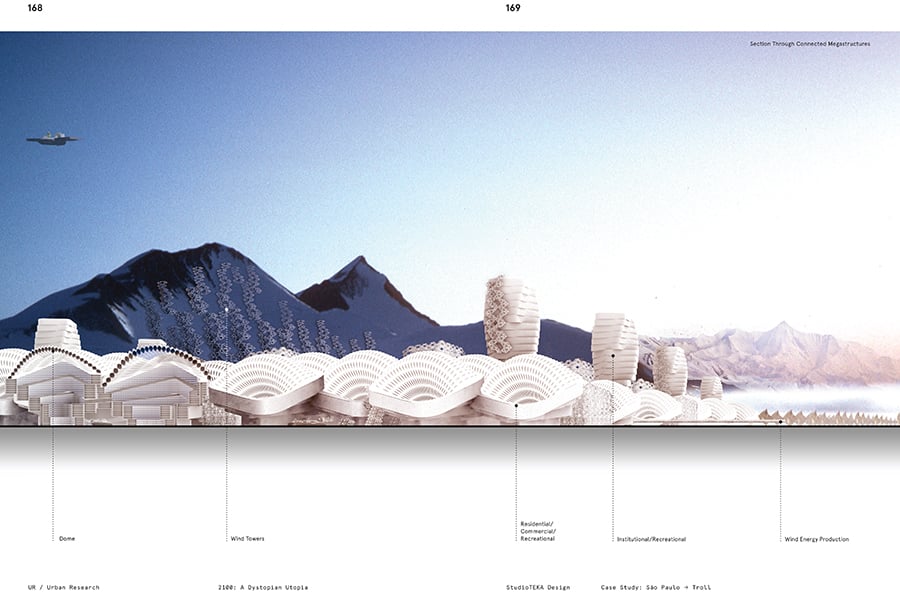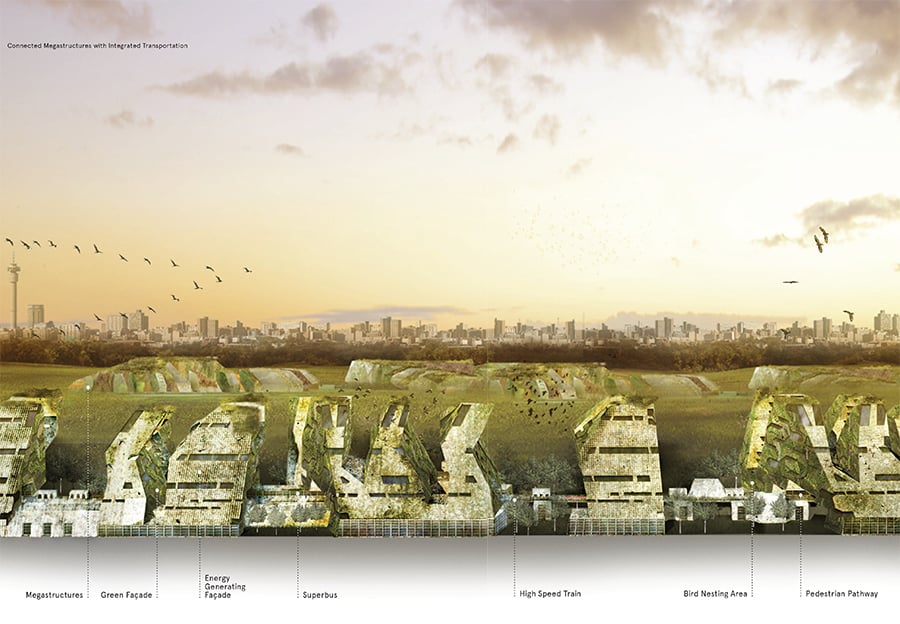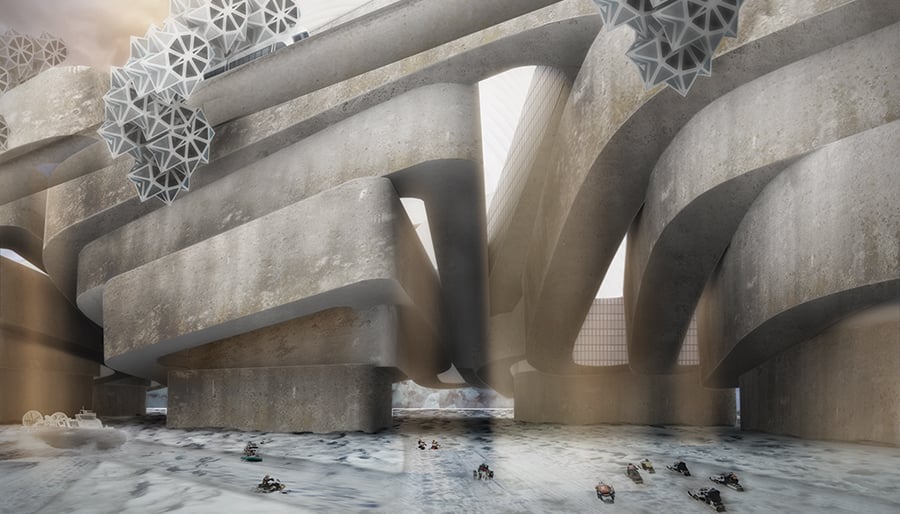
April 25, 2018
This Book Imagines How Cities Let Humanity Survive Cataclysmic Climate Change
2100: A Dystopian Utopia, written by architect Vanessa Keith and her firm StudioTEKA Design, depicts a world where humanity has dramatically adapted to risen seas and extreme weather.
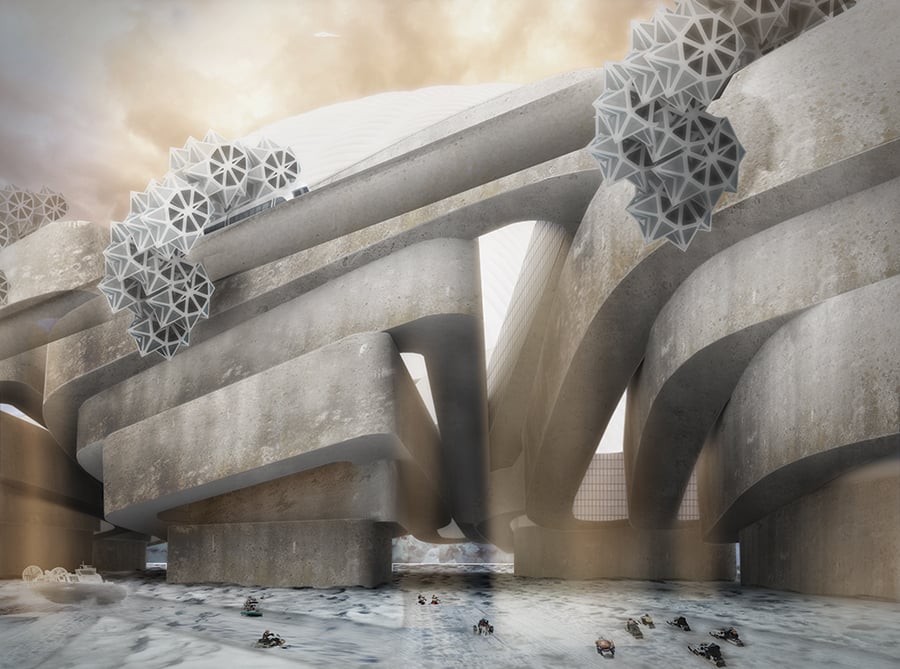
The science fiction worlds of author Ursula K. Le Guin are more than fantastical—they’re also careful studies of how environments (and environmental crises) shape societies. It’s no surprise, then, that Le Guin is a favorite of architect Vanessa Keith, founder of Brooklyn-based StudioTEKA Design, whose new book mines similar speculative and analytical ground. Published last year by the imprint Urban Research, 2100: A Dystopian Utopia imagines how, in spite of catastrophic climate change, humanity might adapt its settlement patterns to new environmental conditions and perhaps even flourish. “All of the technologies that we’re referencing…in the book are things that someone, somewhere is researching,” Keith tells Metropolis. “We envision that in 80 years this stuff could be in place solving our problems.”
In 2100, most of Earth is uninhabitable: Only northern swathes of North America, Asia, and parts of Antarctica can easily support human habitation, while more central latitudes face searing heat or intense storms. This all-too-conceivable scenario (one based on a 7.2°F global temperature increase, an estimate some call conservative) has led to the formation of megacities in the habitable zones, leaving behind smaller “extraction cities” elsewhere that serve as centers or renewable energy capture, high-tech agriculture, and manufacturing and industry. (As the regular population evacuates these “extraction cities,” such as New York and Manila, the city’s old infrastructure and architecture are recycled or re-used. The resulting land is re-purposed or given back to the local ecosystem.) Furthermore, each megacity has a close partnership with an extraction city, where the former provides a rotating supply of labor in exchange for energy and resources.

Keith describes how different settlements adopt different approaches to architecture and urban planning. For instance, New York becomes the Western Hemisphere’s “storm energy capture center,” with underwater turbines harnessing wave energy. Urban farms are installed beneath overpasses while new parks serve as buffer zones for storms. (The extraction cities in 2100 typically have a limited population of rotating inhabitants, while the compact megacities depicted in the book have approximately 10,000,000 inhabitants each, or around 1,000,000 per 5.53 square miles.) By contrast, in the new megacity of Nuuk, Greenland, densely inhabited megastructures are arrayed vertically along a mountainside, a Hyperloop-like transportation system connecting them all.
Elsewhere, another extraction city—Phoenix—focuses on agriculture and energy production primarily through greenhouses and solar panels. Re-purposed houses in the city’s suburban sprawl now host wind turbines on their facades and algae farms on their roofs. Meanwhile, in megacity Vancouver, a wide array of architectural interventions to existing structures (such as new canopies of fruit/vegetable gardens and cantilevered parks) allow for more population density and productivity.
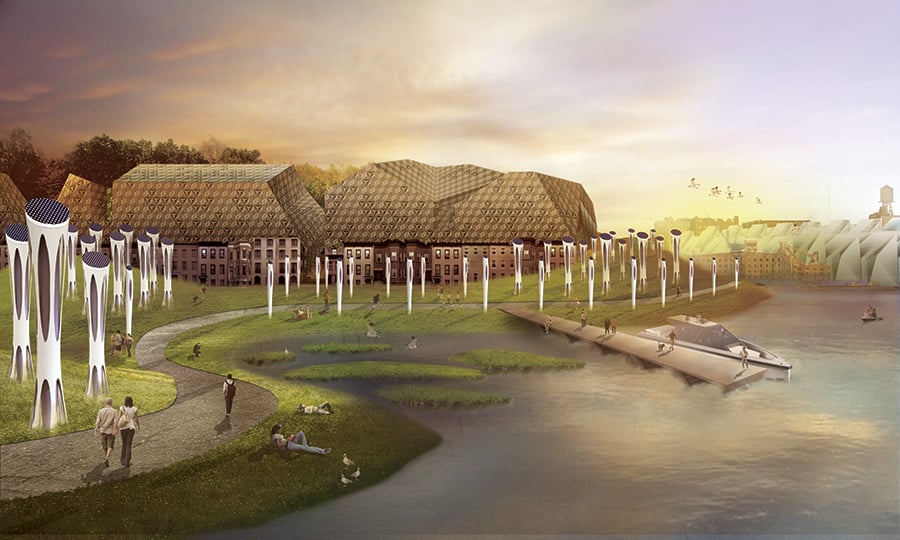
There’s no question that the circumstances outlined in 2100 are grim, but the book optimistically depicts a world where humans have found a way to make catastrophe work. “I think that architecture and design [is] an optimistic endeavor,” says Keith. “You’re trying to imagine a future; you’re given a site, and your site has constraints, and you’re trying to imagine, ‘What is the best possible future for this place?'”
In trying to always imagine the best possible trajectory for humanity, Keith and her studio hope 2100 inspires those who might feel powerless in the face of climate change. “Some of the stuff that we’re looking at is really dire, but if we can’t imagine a positive outcome for ourselves, it’s very, very difficult to get people to do anything except bury their heads in the sand,” she says. “Can we use some of our powers of imagination to envision potential futures for ourselves as a species?”
You may also enjoy “The Untapped Promise of Arctic Urbanism.”




